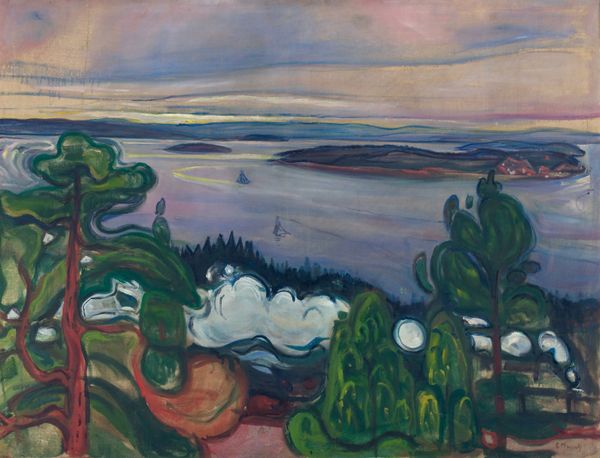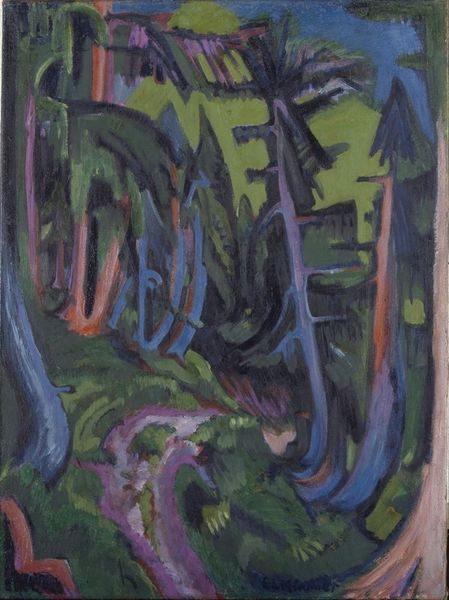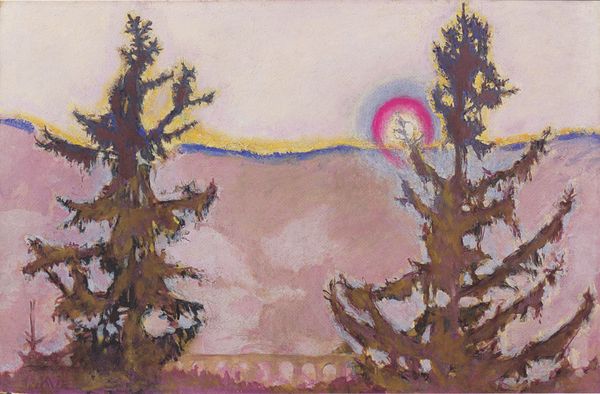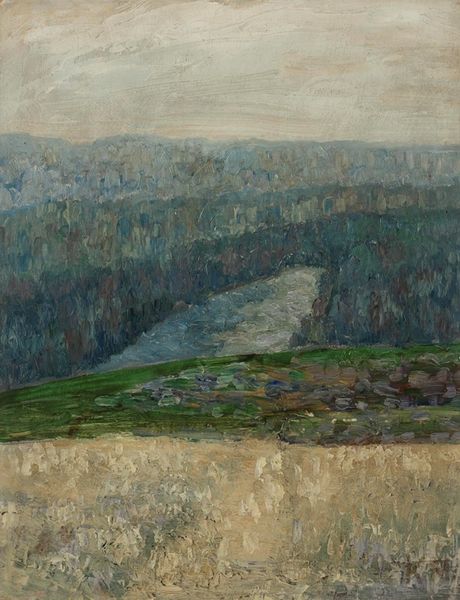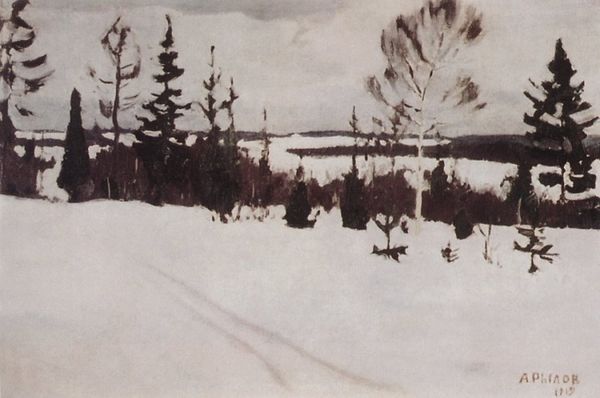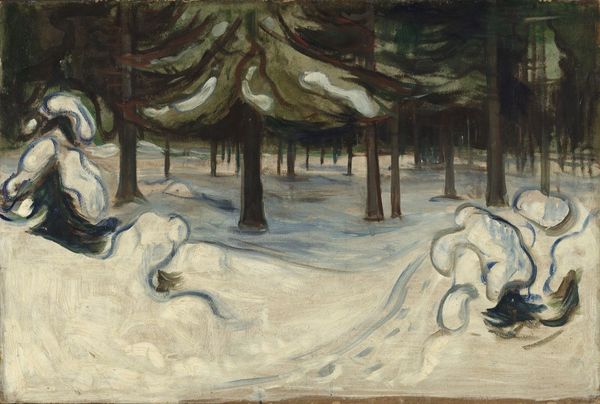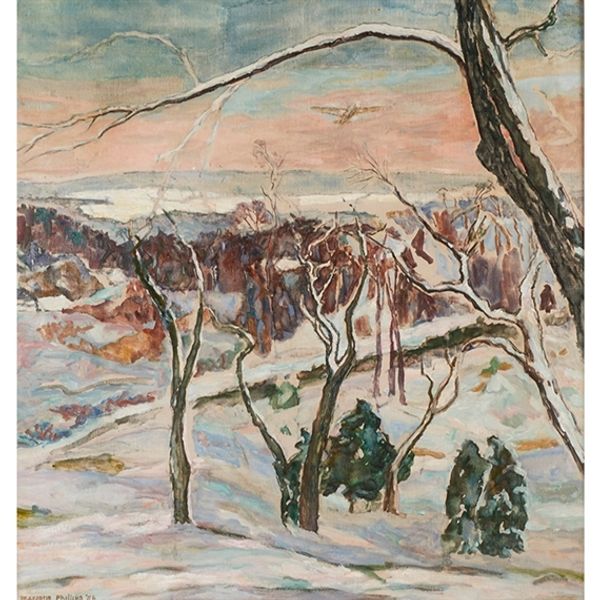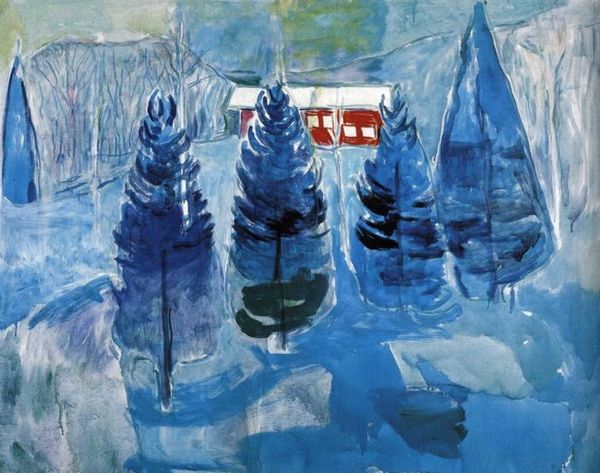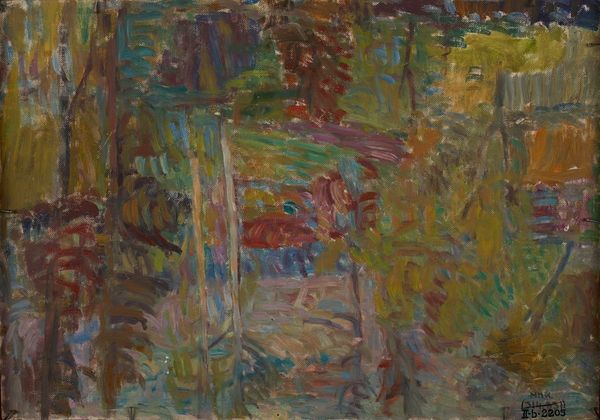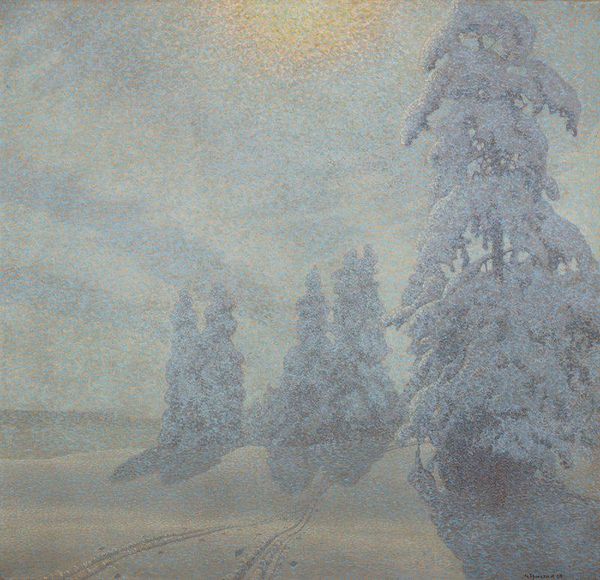
painting, oil-paint
#
painting
#
oil-paint
#
landscape
#
figuration
#
intimism
#
symbolism
#
modernism
Copyright: Public Domain: Artvee
Edvard Munch’s painting, White Night, depicts a tranquil Nordic landscape rendered with muted colors and bold brushstrokes. Munch, a Norwegian artist, painted this landscape during a period of cultural ferment in the late 19th and early 20th centuries. Norway, at the time, was experiencing a surge of national romanticism, with artists seeking to define a distinct cultural identity. Munch, however, often veered away from idealized portrayals of nature. Instead, he explored the psychological dimensions of human experience, using landscape as a backdrop for emotional expression. Note how the stark, almost ghostly, quality of the light creates a sense of unease despite the outward calm of the scene. To understand Munch fully, we need to go beyond the image itself and delve into the social and intellectual currents that shaped his artistic vision. By consulting letters, biographies, and critical essays from the period, we gain insights into the complex interplay between art, society, and individual experience.
Comments
No comments
Be the first to comment and join the conversation on the ultimate creative platform.

